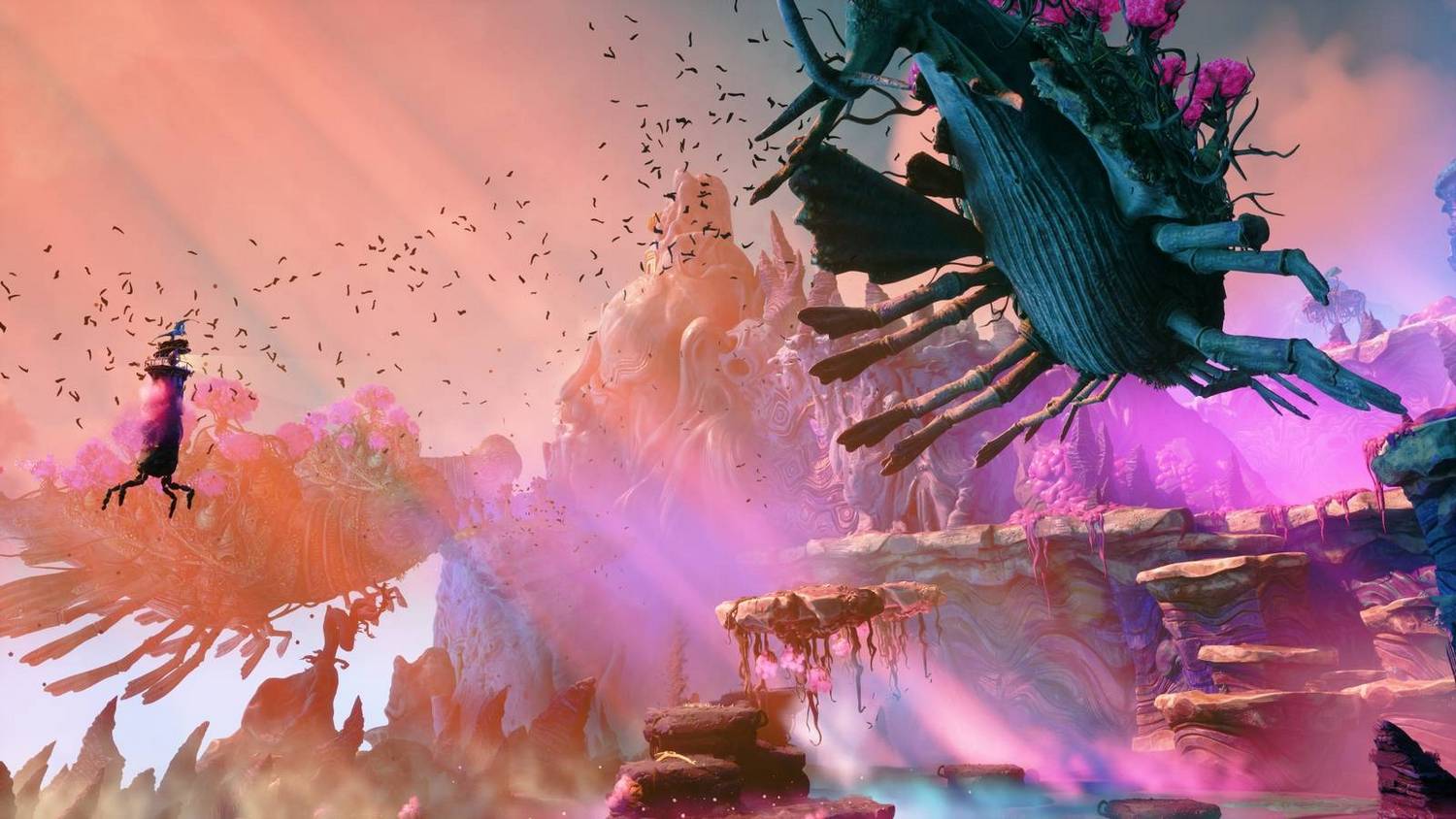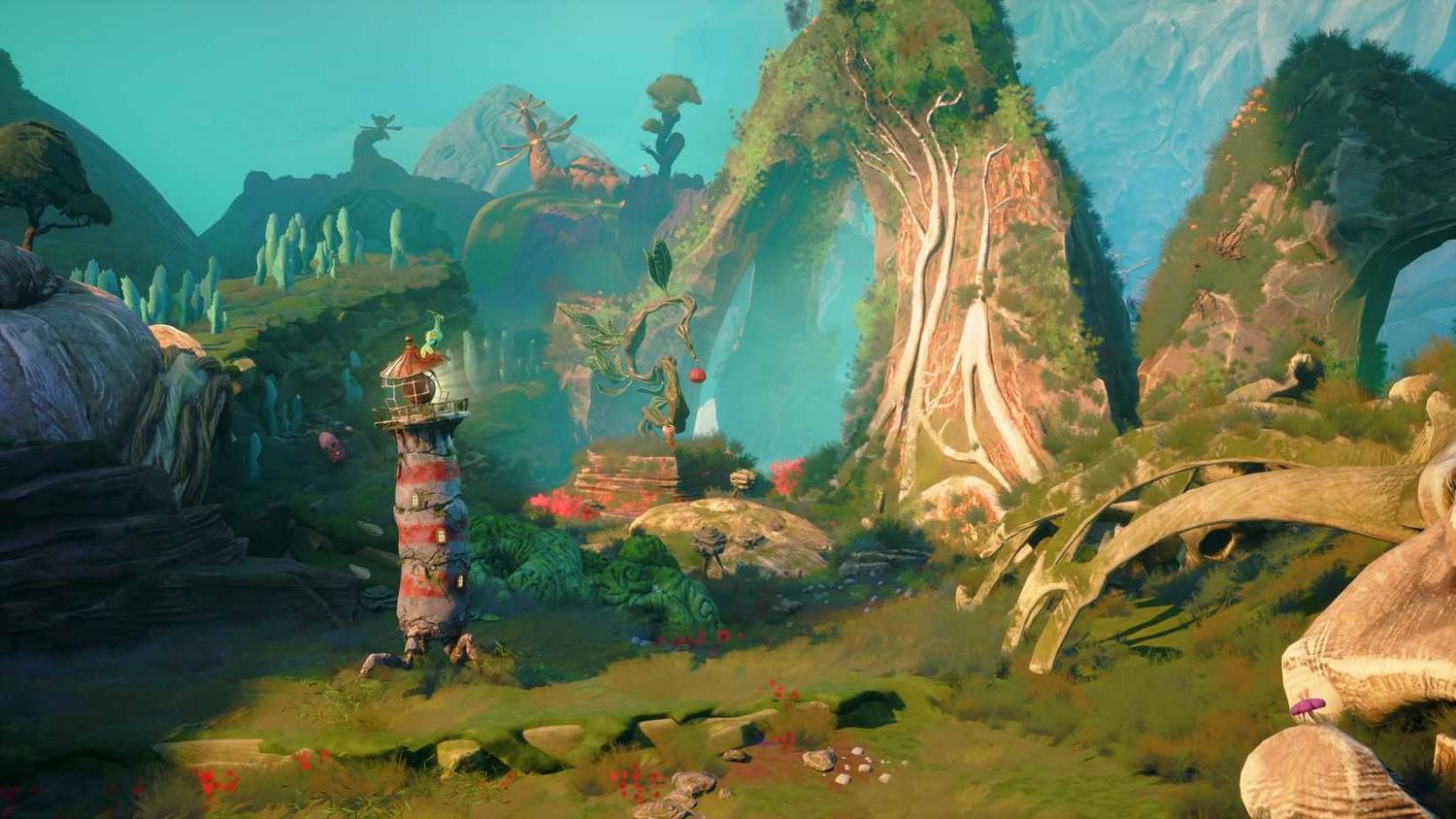Double Fine’s ‘Keeper’ to Launch: Creative Director Urges Players to Embrace the Weirdness of the Walking Lighthouse Game
Popular Now
 NBA 2K24
NBA 2K24
 Poppy Playtime
Poppy Playtime
 PUBG Mobile
PUBG Mobile
 Counter-Strike 2
Counter-Strike 2
 Sonic the Hedgehog™ Classic
Sonic the Hedgehog™ Classic
 Brawl Stars
Brawl Stars
 EA SPORT FC 25
EA SPORT FC 25
 Free Fire
Free Fire
 Call of Duty
Call of Duty
 The Legend of Zelda
The Legend of Zelda 
SAN FRANCISCO, CA – October 15, 2025 – In a highly anticipated release set for this week, Double Fine Productions, the studio renowned for its quirky, heartfelt adventures like Psychonauts 2, is preparing to launch its next unique title, Keeper. The game, which features an animated lighthouse that literally walks, or ‘hikes,’ across a desolate, surreal world, has been generating significant buzz in the indie adventure game news sphere. In a recent interview, Creative Director Lee Petty outlined the core design philosophy, explicitly telling players to “embrace the unexpected” and enjoy the game’s inherent strangeness.
The latest title from the esteemed studio is a third-person, wordless puzzle adventure centered on the unlikely companionship between the awakened lighthouse and a spirited seabird named Twig. The premise alone—a massive, sentient tower on spindly legs traversing a post-human landscape—positions Keeper as one of the most distinctive and visually arresting games of the year. It’s a clear move by Double Fine to lean into the thematic territory that has made them a household name in narrative-driven games.
 The Art of the Unexpected: A Wordless Storytelling Masterclass
The Art of the Unexpected: A Wordless Storytelling Masterclass
Petty emphasizes that the central tenet of Keeper is to create a “weird-but-chill experience” that encourages exploration and experimentation without the pressure of failure. This design choice is a direct response to the game’s highly unconventional protagonist and setting.
- Low-Pressure Gameplay: Petty confirmed a crucial detail for players seeking a relaxing experience: there is nothing the player can do to die. This removes the panic associated with difficult controls or high-stakes action, allowing players to focus entirely on discovery and interpretation.
- The Light as the Mechanic: The lighthouse’s beam is the primary tool for interaction, a truly innovative game control system. The light has two modes—unfocused and focused—which are used to reveal subtle shimmers in the environment, solve puzzles, and even stimulate growth in the strange flora of the world of Aramán. This replaces traditional inventory and dialogue systems, making the interaction feel tactile and intuitive.
- Twig’s Essential Role: The companion bird, Twig, is not just a cosmetic feature. Since the lighthouse “doesn’t have arms, only legs,” Twig is essential for directly manipulating objects in the environment. This cooperative puzzle-solving—combining the light’s power with the bird’s agility—is a recurring core loop.
This commitment to wordless storytelling is a significant creative risk. The narrative, a heartening tale of unlikely companionship, is communicated entirely through animation, sound, and the emotional cues of the lighthouse and Twig. For instance, Twig’s subtle body language—curling up or glancing nervously—replaces spoken dialogue to convey tension or fear in darker areas. This technique is designed to leave intentional room for player interpretation, fostering the kind of rich, post-game discussions that Petty values in art.
 Inspiration: Abandoned Mines and the Surreal California Landscape
Inspiration: Abandoned Mines and the Surreal California Landscape
The distinctive, post-apocalyptic, yet bucolic setting of Keeper draws deep inspiration from Petty’s personal experiences. The environments, which range from misty forests to desolate mountain ridges, are directly influenced by the abandoned mines and hiking trails near his home in California. He describes stumbling across old, indecipherable machinery in the hills—a feeling of environmental storytelling that perfectly captures the sense of mystery pervasive in the game.
The core conceit—a walking lighthouse—is a brilliant example of taking a familiar, static object and questioning its function in a new reality. “How has it changed? Well, first it has to walk, and now its lights are used for something entirely different,” Petty noted. This metamorphosis, or “odyssey of mystifying metamorphosis,” is the engine driving both the narrative and the constant introduction of new gameplay mechanics. Players are promised an experience that consistently changes, avoiding repetitive puzzle design by presenting a constant stream of unique setups and interactions. This ensures that the thrill of discovery remains fresh, a high-value commodity in the competitive modern video game market.
The Double Fine Legacy and Market Positioning
Keeper is positioned not as a game of technical mastery, but as an experience of emotional and imaginative immersion. In a landscape dominated by open-world epics and intense competitive titles, Double Fine’s strategy of offering a highly accessible and unique gaming alternative is a clever piece of video game marketing strategy. By openly encouraging players to embrace the oddity, they are speaking directly to their established fan base while attracting new players fatigued by industry trends.
The game is set to launch on October 17, 2025, for Xbox Series X|S, Xbox on PC, and Steam, and will be available on Xbox Game Pass at launch. With a modest file size and system requirements that focus on a stable graphical experience, Double Fine has ensured that the barrier to entry is low for a wide range of consumers looking to immerse themselves in this beautiful, surreal, and deeply weird adventure.
Keeper represents an inspiring vote of confidence in the power of abstract design and wordless narrative. The message from the creative director is clear: leave your expectations at the door and prepare to explore a world where lighthouses hike, birds lead the way, and the greatest joy comes from figuring out what a new kind of light can do.






 The Art of the Unexpected: A Wordless Storytelling Masterclass
The Art of the Unexpected: A Wordless Storytelling Masterclass Inspiration: Abandoned Mines and the Surreal California Landscape
Inspiration: Abandoned Mines and the Surreal California Landscape